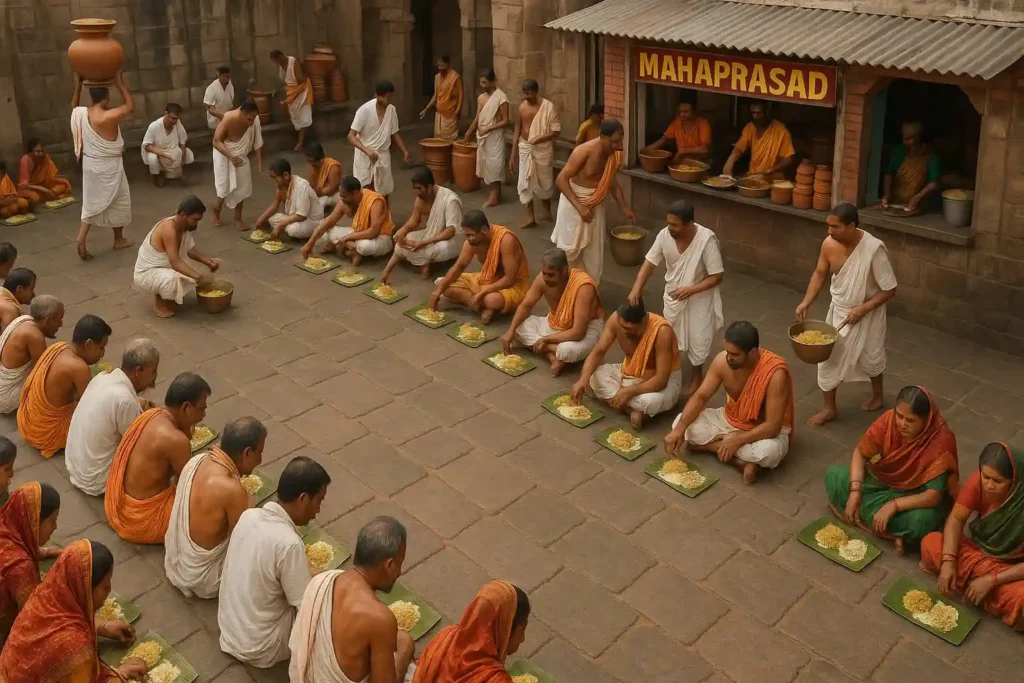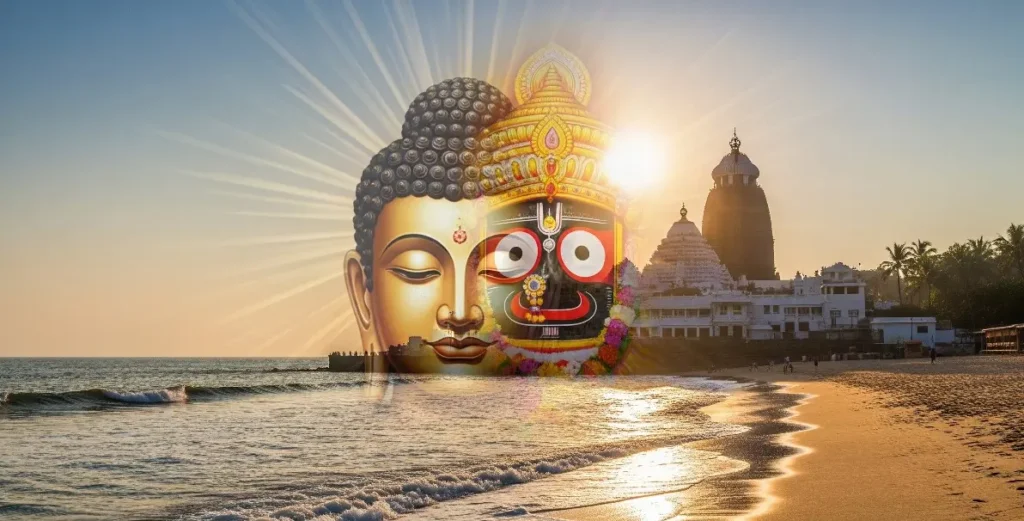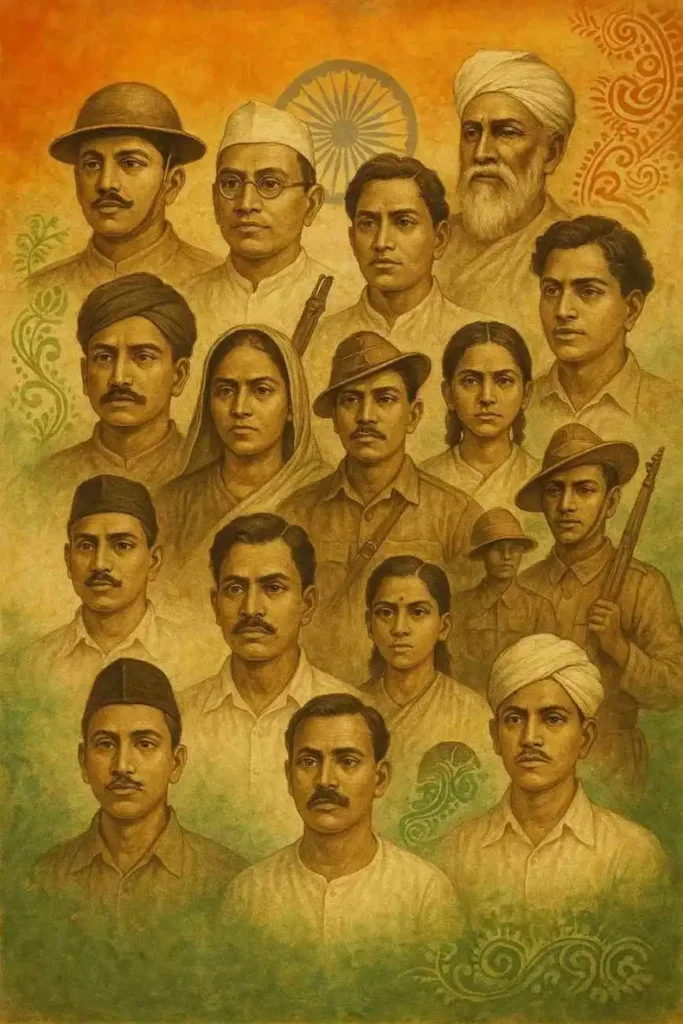What Makes Mahaprasad of Jagannath Temple So Unique?
A Tradition Rooted in Tantric & Tribal Heritage
According to ancient tantric beliefs:
> “Food offered to Jagannath becomes Mahaprasad only after it is further offered to Goddess Vimala.”
This ritual takes place within the sacred Bhairavi Chakra, a spiritual space symbolizing equality, where all castes participate in consuming Mahaprasad as equals.
Why Is It Called “Abadha”?

Mahaprasad: Where Everyone Eats as Equals
Breaking barriers with divine food
To begin with, the most heartwarming and revolutionary aspect of Mahaprasad is that:
Everyone eats together—Brahmins, Kshatriyas, Vaishyas, Shudras, and people from all walks of life.
Moreover, it is common for devotees to share Mahaprasad from each other’s hands or even leftovers, viewing it as a purifying act.
According to scholars:
> “Caste is forgotten in creed, deed, and word while consuming Mahaprasad.”
Consequently, this secular attitude has become the cornerstone of Jagannath culture, inspiring fraternity and humanism.
Ancient Legends & Historical Proofs
Validating tradition through time
As evidenced by various accounts, historical documents and scholars reveal:
Significantly, King Jajati Keshari institutionalized the offering of Mahaprasad.
Correspondingly, the Buddhist Tantric tradition of Vajrayana, promoted by Indrabhuti in the 8th century, greatly influenced Mahaprasad rituals.
Likewise, British records from 1806 mention tantric influences on temple worship.
Mahaprasad’s Role in Statecraft
People Also Ask
1. What is the significance of Jagannath Mahaprasad?
2. Why do people call Mahaprasad Abadha?
3. Can people of all castes eat Mahaprasad together?
4. Do Tantric traditions influence Mahaprasad?
5. Where can you eat Mahaprasad in Puri?
Final Thoughts: A Divine Meal That Binds Humanity
- ✅ Visit Anand Bazaar and have Mahaprasad
- ✅ Share it with others, irrespective of who they are
- ✅ Take home some Nirmalya, and experience purity beyond barriers


